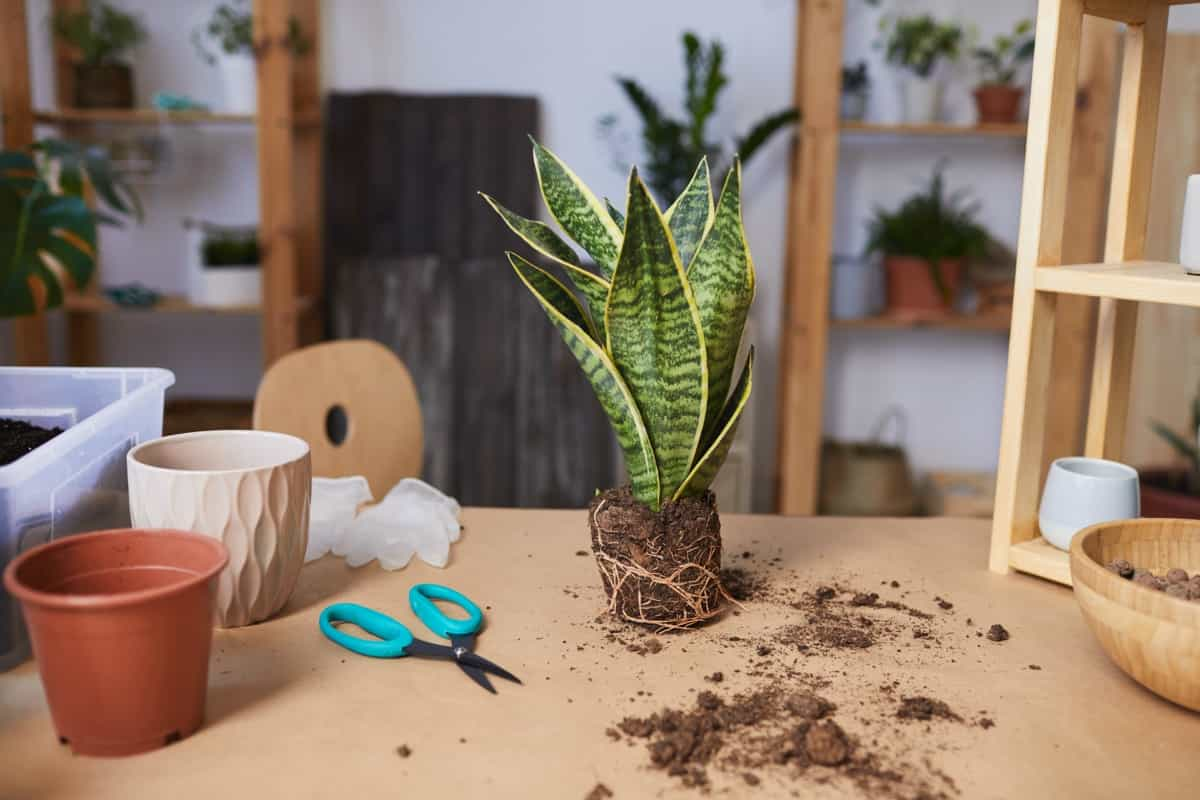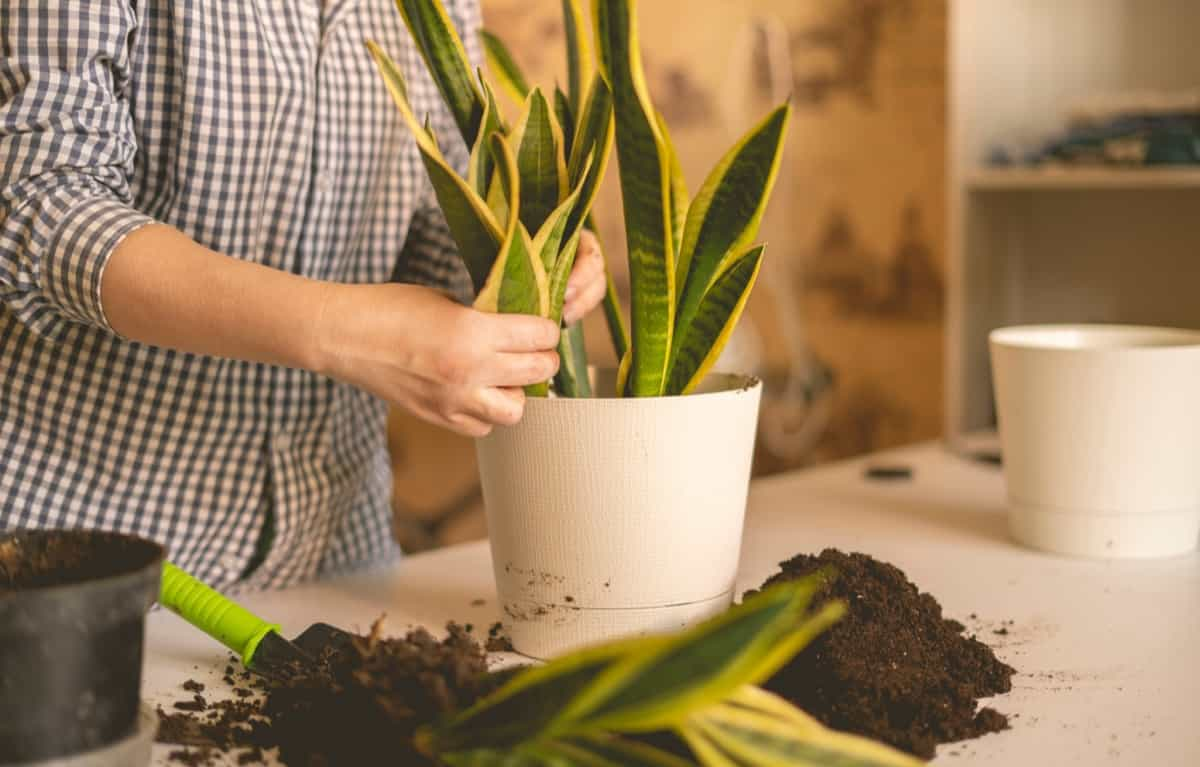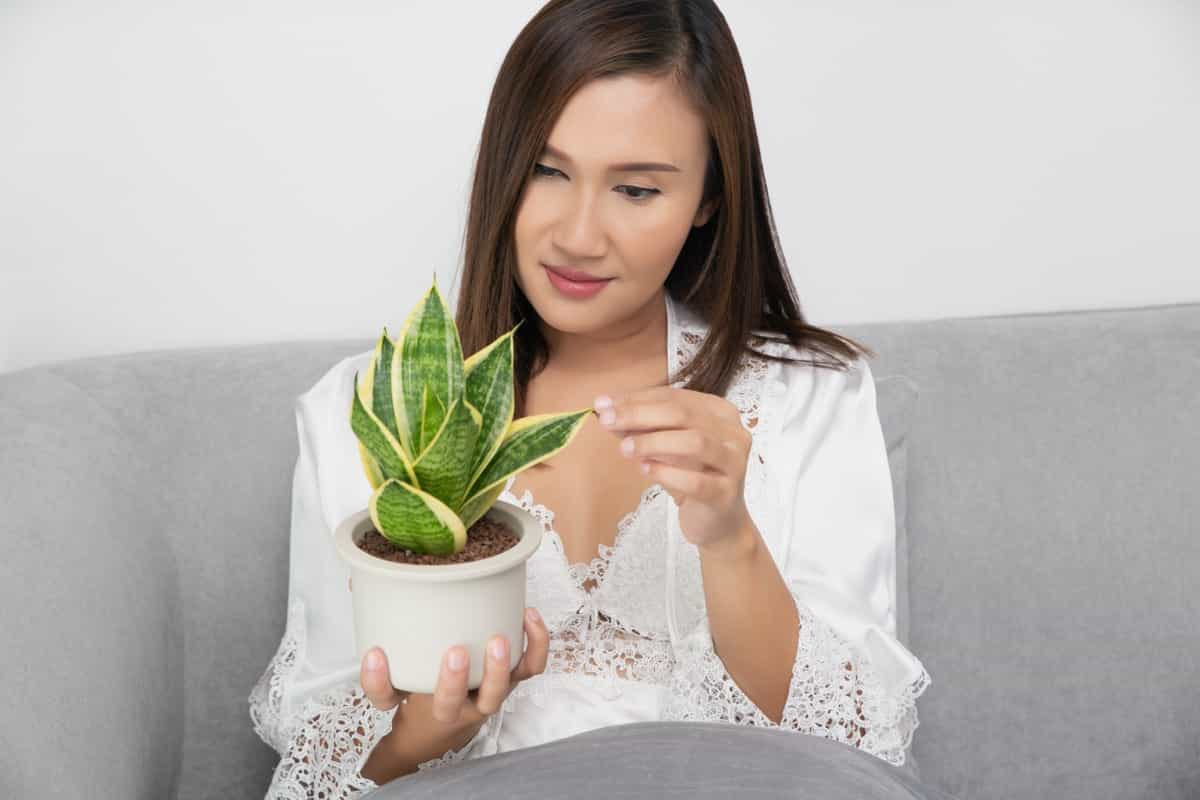If you’re looking to add a touch of beauty and greenery to your space, this guide is your go-to resource for everything related to Snake Plants 101. From frequently asked questions (FAQs) to fact-checking common myths, we’ve got you covered. By the end of this guide, you’ll be armed with the knowledge needed to cultivate and appreciate Snake Plants in all their glory. From debunking myths to exploring fun facts, embark on a journey of discovery and become a Snake Plant aficionado. Get ready to transform your space with these resilient and aesthetically pleasing plants!

Snake Plant 101
Is Snake Plant Lucky or Unlucky?
The Snake Plant (mother-in-law’s tongue) is considered lucky in Feng Shui. It’s believed to bring positive energy, prosperity, and health. Its resilience and air-purifying qualities enhance its reputation as a symbol of good fortune, making it a popular choice for homes and offices seeking positive vibes.
Can We Water Snake Plant Daily?
Watering a snake plant daily is not recommended, as it prefers low water levels. Overwatering can lead to root rot. Allow the soil to dry between waterings, typically every 2-4 weeks. Adjust the watering frequency based on factors such as humidity and light.
What Are the Disadvantages of Snake Plant?
Despite its air-purifying reputation, the snake plant is not entirely harmless. Ingesting the leaves can cause mild toxicity symptoms in pets and humans, including nausea and vomiting, due to the presence of saponins. If snake plants are planted outdoors in certain climates, they can become invasive and overtake native vegetation, posing an ecological threat. Care should be taken to prevent its escape into natural environments.
Is It Good to Have Snake Plant Inside the House?
Having a snake plant indoors is beneficial. Snake plants are low-maintenance and are known for improving indoor air quality by removing toxins. They thrive in low light and help increase oxygen levels, making them an excellent option for enhancing the ambiance and health of your home.
In case you missed it: The Benefits of Having Snake Plants in the Home

Can We Gift Snake Plant?
Snake Plants, known for their air-purifying qualities and low maintenance, make excellent gifts. Their unique appearance adds a touch of nature to any space while promoting a healthy indoor environment. Perfect for plant lovers or those who are looking to enhance their home or office decor.
Is Snake Plant Poisonous?
The Snake Plant (Sansevieria) is mildly toxic to pets and humans. Ingesting its leaves can cause nausea, vomiting, and diarrhea. Keep it out of reach of children and pets, and seek medical attention if ingested.
What are the Benefits of a Snake Plant?
- Renowned for its air-purifying qualities, it removes toxins like formaldehyde and benzene, enhancing indoor air quality.
- It requires minimal care, thriving in low light, and infrequent watering, making it ideal for busy individuals.
- The snake plant also converts carbon dioxide into oxygen at night, contributing to a healthier sleeping environment.
- Its adaptability to various conditions and ability to withstand neglect make it a resilient and aesthetically pleasing addition to homes.
Where Should I Put My Snake Plant in My House?
Place your snake plant (Sansevieria) in indirect light, such as near a north or east-facing window. It tolerates low light but thrives in bright, indirect sunlight. Ideal locations include living rooms, bedrooms, or offices with moderate temperatures.
Do Snake Plants Attract Snakes?
No, Snake Plants do not attract snakes. Despite the name, they are not related to snakes and do not emit scents or substances that attract reptiles.
How to Revive a Dying Snake Plant?
- Ensure proper sunlight, allowing it to receive indirect light for 6-8 hours daily.
- Adjust watering, letting the soil dry between waterings to prevent root rot.
- Trim yellow or damaged leaves, promoting new growth.
- Repot in well-draining soil if the current one is compacted.
- Introduce a balanced, diluted fertilizer monthly during the growing season.
- Check for pests and treat accordingly. Lastly, be patient, as recovery may take time.
Does Snake Plant Produce Oxygen 24 Hours?
While Snake Plants primarily release oxygen during the day through photosynthesis, they also undergo a process called CAM (Crassulacean Acid Metabolism), enabling them to produce oxygen at night. While the nighttime oxygen production is minimal, Snake Plants contribute to indoor air quality around the clock.
In case you missed it: The Best Soil Mix for Snake Plants: A Comprehensive Guide

Can Snake Plants Flower?
Although it’s not common, mature plants produce long, elegant spikes with small, fragrant, greenish-white flowers. Flowering usually occurs under specific conditions, including adequate sunlight and maturity. The primary appeal of Snake Plants lies in their resilient foliage rather than their infrequent blooms.
Do Snake Plants Release Oxygen at Night?
Snake plants perform photosynthesis during the day, releasing oxygen. At night, they switch to a process called CAM (Crassulacean Acid Metabolism), continuing to release a small amount of oxygen. While not as significant as during the day, snake plants can still contribute to indoor air quality at night.
Is Snake Plant Bad for Vastu?
Snake Plant is not considered bad for Vastu. In fact, it is believed to bring positive energy and is often recommended for homes.
Is Snake Plant Good at Night?
Snake Plant (Sansevieria) is a good choice for bedrooms at night. It undergoes photosynthesis during the day, converting carbon dioxide into oxygen. At night, it switches the process to release oxygen, making it a natural air purifier, promoting better sleep and air quality in indoor spaces.
Which Snake Plant is Best?
Varieties like “Sansevieria trifasciata Laurentii” with its yellow-edged leaves or “Sansevieria trifasciata Hahnii” with compact rosettes are commonly favored. Ultimately, the best variety depends on personal preference and the specific conditions of your space.
How Many Types and Varieties of Snake Plants Exist?
There are about 70 recognized species of snake plants (Sansevieria), each with various varieties and cultivars. Commonly known as Mother-in-law’s Tongue or Devil’s Tongue, these resilient plants exhibit diverse leaf shapes, sizes, and colors. Varieties like Sansevieria trifasciata ‘Laurentii’ feature yellow-edged leaves, while Sansevieria cylindrica displays cylindrical foliage. Compact forms like Sansevieria trifasciata ‘Hahnii’ are popular for smaller spaces.
Which Season is Best for Snake Plant?
Snake plants thrive in spring and summer when they experience moderate to bright indirect sunlight.
Can Snake Plants Live Indoors Without Sunlight?
Snake plants can thrive indoors with minimal sunlight. They are adaptable and can tolerate low-light conditions, making them suitable for spaces with limited sunlight. However, they will grow best with some indirect light, so placing them near a window or providing occasional exposure to natural light is beneficial.
Why is My Snake Plant Dying?
Snake plants (Sansevieria) may be dying due to overwatering, root rot, or insufficient light. Ensure well-draining soil and water sparingly and provide bright, indirect sunlight. Check for pests and avoid extreme temperature changes.
Why is My Snake Plant Turning Brown?
Brown tips on a snake plant may result from overwatering, causing root rot. Ensure well-draining soil; water only when the top inch is dry. Excessive sunlight or low humidity can also lead to browning. Adjust light levels and mist occasionally. Trim damaged leaves and maintain a balanced care routine for a healthier plant.
In case you missed it: Different Varieties of Plumeria Plants: A Visual Guide

What Does an Overwatered Snake Plant Look Like?
An overwatered snake plant may display symptoms such as mushy yellowing leaves and a foul odor from the soil. The soil may feel excessively wet, and the plant’s roots may become soft and discolored. To remedy this, reduce watering frequency and ensure well-draining soil to prevent root rot.
Can I Use Neem Oil on Snake Plants?
Neem oil can be used on snake plants. Dilute 2-3 tablespoons of neem oil with one liter of water and apply it to the plant to control pests like spider mites and mealybugs. Test on a small area first to ensure the plant tolerates it. Use it sparingly, as excessive application may harm the plant.
Is Vinegar Good for Snake Plants?
Diluted vinegar can be beneficial for snake plants. Dilute one part of the vinegar in nine parts of the water to create a mild solution. Use it sparingly as a natural fungicide and to adjust soil pH. However, excessive use may harm the plant, so apply it cautiously to avoid potential damage.
Conclusion
Generally, snake plants are easy to care for; however, individual care requirements may vary. Observing your specific plant’s needs and adjusting care accordingly is always a good practice.
- Feed Your Flock for Less: Top 10 Tips to Save on Chicken Feed
- Ultimate Guide to Ossabaw Island Hog: Breeding, Raising, Diet, and Care
- Hatching Answers: The Top 10 Reasons Your Chickens Aren’t Laying Eggs
- Eggs and Economics: Breaking Down the Cost of Raising Backyard Chickens
- Defend Your Greens: Proven Methods to Keep Iguanas Out of Your Garden
- Ultimate Guide to Cinnamon Queen Chicken: A Comprehensive Guide for Beginners
- Ultimate Guide to California Tan Chicken: Breeding, Raising, Diet, Egg-Production and Care
- Ultimate Guide to Marsh Daisy Chicken: Breeding, Raising, Diet, and Care
- 10 Types of Chicken Farming Businesses You Can Start for Profits